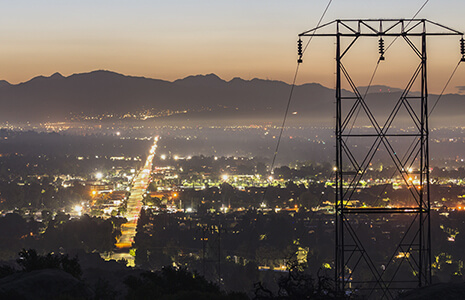California’s ambitious green energy goals promise to drive economic growth while protecting our environment. Instead, the gap between the state’s lofty goals and its ability to achieve them is widening, placing significant strain on California’s energy infrastructure and transportation systems. The results are higher utility bills, transportation costs, and housing prices – hitting low- and middle-income families hardest, according to a report from the Legislative Analyst’s Office.
California must find a way to meet its climate goals without compromising residents’ financial stability.
What are the Real-World Costs of California’s Rushed Green Energy Policies
- Electric Vehicles (EVs) and Charging Infrastructure: California’s push for all zero-emission vehicles by 2035 is speeding up the switch to EVs—but the high price tags and lack of charging stations, especially in underserved communities, show just how much we need stronger, more accessible energy infrastructure to keep up.
- Rising Electricity Demand and Grid Strain: EVs and electric public transit are increasing demand on the state’s already fragile power grid. Without upgraded energy infrastructure, residents may face higher electricity rates, more frequent power outages, and fewer options for clean transportation—all signs that the state’s green energy push is moving faster than our infrastructure can handle.
- Housing Market Impact and Green Energy Infrastructure: As California rolls out mandates for solar panels, heat pumps, and EV chargers in homes, it’s putting extra strain on both the power grid and the housing market. For families already dealing with rising costs, these added expenses can make it even tougher to afford a place to live.
- Fuel Supply Chain Dependency: Despite its green ambitions, California still depends on crude oil for over half its fuel needs. At the same time, strict environmental policies have cut local oil production, boosted dependence on foreign imports, and led to less gas being refined in-state. The bottom line? Drivers are stuck paying more at the pump.
- Costly Public Transit Electrification Upgrades: Electrifying California’s public transit system is key to achieving climate goals—but doing so without first addressing outdated energy infrastructure could lead to service delays and fare hikes, especially for communities that can least afford it. SiliconValley.com points out the technical and financial hurdles faced by California’s electric bus industry—illustrating the broader challenge of scaling up sustainable transit without sufficient energy infrastructure in place.
California’s clean energy goals are bold—but the policies are moving faster than the infrastructure needed to support them. Without steady investment and smart planning, this gap could widen inequality and slow progress toward the state’s own climate targets.
Take Action
If you are frustrated with how California’s energy policies affect you, we want to hear your story and urge policymakers to adopt fair energy policies that balance sustainability with affordability. Join us at https://levantatuvoz.org/take-action.







